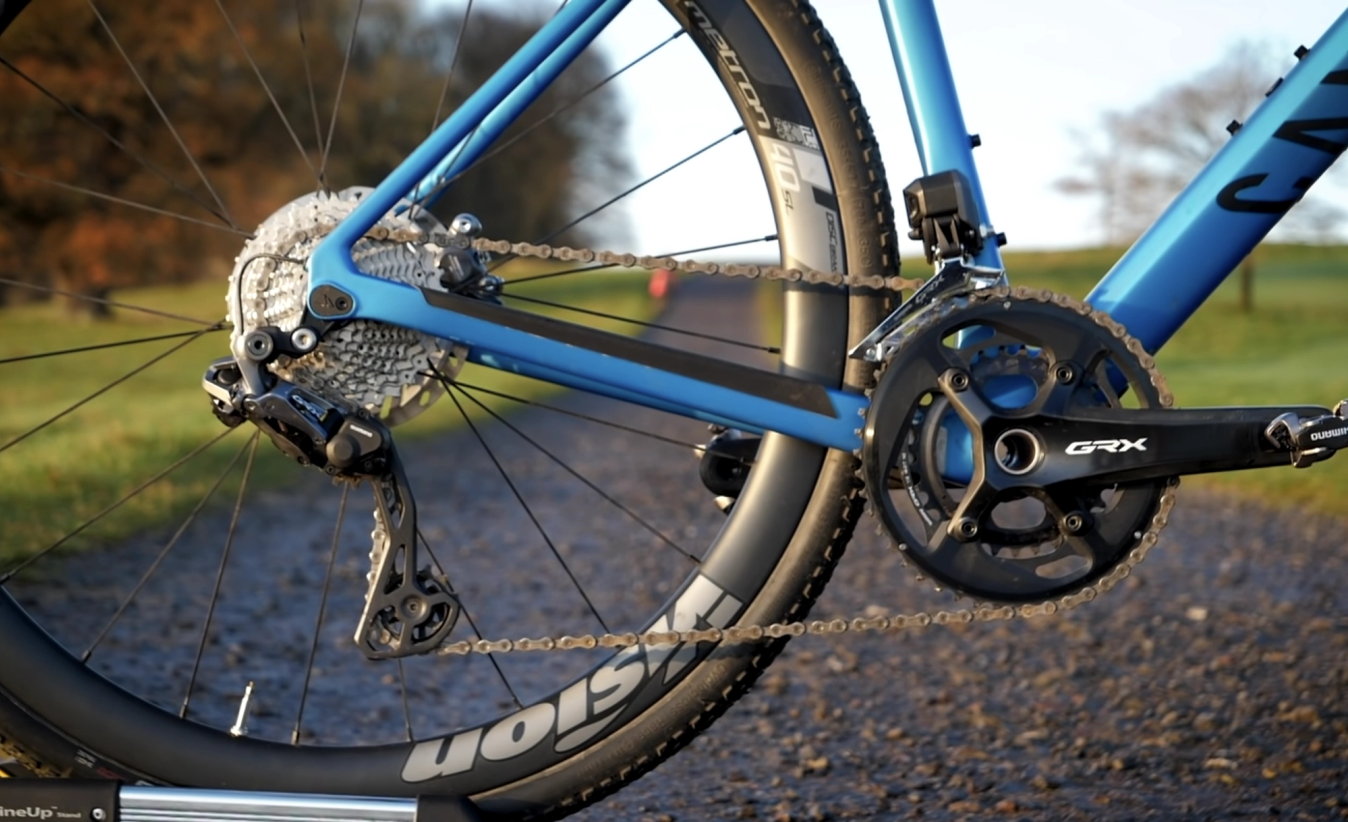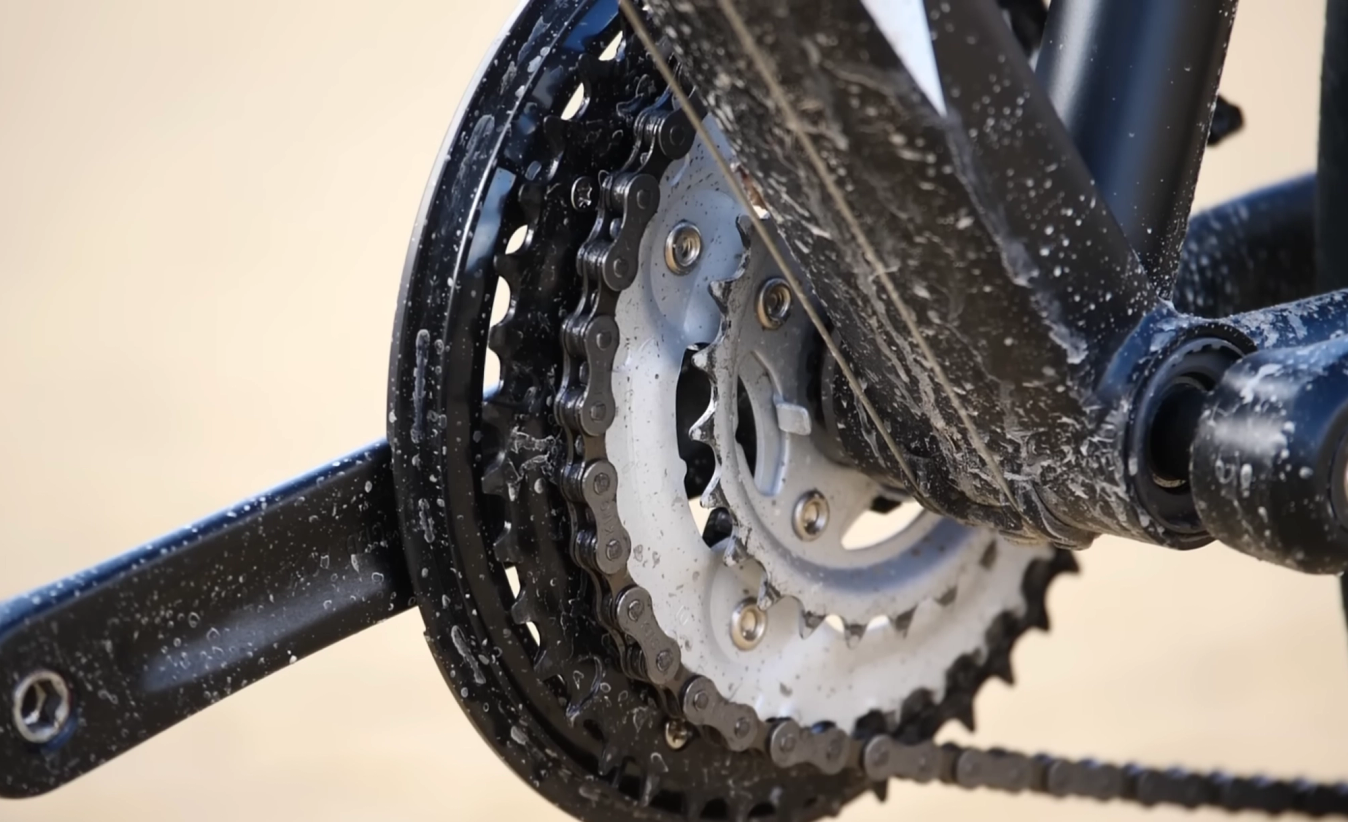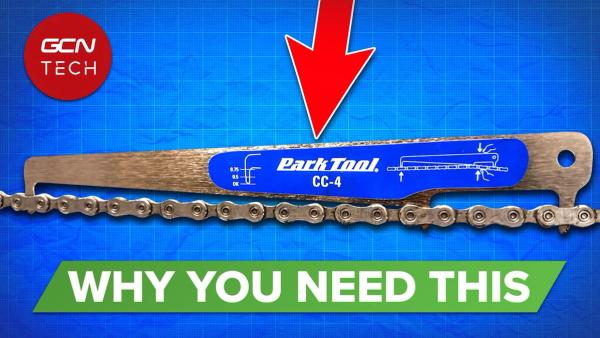Everything you need to know about 1x, 2x and 3x groupsets
How to pick the best option for you and your riding.
James Howell-Jones
Junior Writer
When it comes to groupsets, there are three main options out there: one, two or three chainrings, referred to as 1x, 2x or 3x. You might be wondering which option is right for the kind of riding you do. To help you decide, we’ve outlined the differences between each of the options, so you can make an informed choice.
Anatomy of a drivetrain
The chainrings that are attached to your cranks work with the cassette (the set of sprockets mounted to the back wheel of your bike) to create the different gear ratios that you can use while riding.
The gear ratio is determined by the number of teeth on the front and the back. On the front, more teeth gives a harder gear, and fewer teeth gives an easier gear. On the back, more teeth gives an easier gear, and fewer teeth gives a harder gear. Harder gears are good for riding fast, perhaps when riding downhill or on the flat, and easier gears are good for riding slower, for example when climbing a hill.
On a traditional drivetrain with more than one chainring, the chainrings and the cassette work together to provide a wide range of gears: the cassette offers lots of close together gears, allowing us to choose exactly the right cadence for the speed we’re riding at, and the chainrings allow us to change between a broad range of gears. It’s almost like having a car with a high and low range gearbox. Put it in low range, and you can switch between the normal gears, just slower. In high range, you’ve got the same gears, but the whole lot is geared up.
Single chainring or 1x (‘one by’)

© GCN
1x drivetrains are popular for gravel and mountain biking
In recent years, though, we’ve seen 1x drivetrains increase in popularity. Nowadays, they’re ubiquitous on mountain bikes, common on gravel bikes and not entirely unusual on road bikes. Instead of that ‘high range, low range’ approach, 1x drivetrains cover the entire gear range with just the cassette on the rear wheel.
To achieve this, 1x drivetrains use cassettes with a large range, with more sprockets and a bigger jump between each gear. On 1x drivetrains, the cassettes are huge – people refer to them as ‘dinner plates’, so you can imagine how big I mean. In order to reach the low gear ratios needed for climbs, they have huge sprockets at one end, sometimes with as many as 52 teeth. And to achieve the high ratio gearing needed for flat sections and descents, they have tiny sprockets at the other end of the cassette, usually ten or 11 teeth.
The chainrings on 1x drivetrains are specially designed for the purpose. They have tall teeth with ‘narrow-wide’ profiling. This means the chain fits really snugly over the chainring, virtually eliminating the chance of it falling off, even over rough terrain. As a result, 1x drivetrains are popular with mountain bikers and gravel riders.
1x drivetrains are simpler than 2x and 3x drivetrains, both to set up and use. There’s no front derailleur to set up and maintain, and when riding, you don’t have to worry about which chainring you’re in, or whether your chainline is straight. It’s simply a case of shifting one way for an easy gear, and another way for a harder gear.
But 1x drivetrains aren’t perfect. The gaps between the gears are large, and for road cycling, that can be irritating. Also, because the chain has to bend to reach all the different sprockets on the cassette, 1x drivetrains are marginally less efficient than 2x or 3x drivetrains.
Double chainring or 2x (‘two by’)

© GCN
2x drivetrains offer a wider gear range and smaller jumps between gears
2x drivetrains are the norm on road bikes and common on gravel bikes. They have two chainrings on the crankset and a front derailleur to guide the chain between the two. They are paired with a close-range cassette on the back wheel, with only a few teeth difference between each of the cogs in the sprocket. In combination with the two chainrings on the front, this gives a wide range of gears with small gaps between each one.
Traditionally, double chainsets have 53 teeth on the big ring and 39 on the small, but in recent years, ‘compact’ chainsets with 50 and 34 teeth have become very popular, as have semi-compact chainsets with 52 and 36 teeth.
The cassette on a 2x drivetrain usually has between ten and 12 gears, traditionally with 25 teeth on the biggest sprocket and 12 on the smallest. In recent years, wider range cassettes have become popular, often with a 32 or 34 teeth on the largest sprocket and a ten or 11 teeth on the smallest. Even with these new, wider range cassettes, the gaps between each of the gears is small, giving riders the ability to select the perfect gear to maintain a comfortable cadence at whatever speed they’re riding. It’s those small jumps between gears that make 2x drivetrains so popular with road cyclists: when riding hard or in a group, getting the perfect cadence is really important.
Triple chainring or 3x (‘three by’)

© GCN
3x chainsets are common on touring bikes or low end groupsets
Finally, we’ve got the triple chainring, or 3x drivetrain. These work much like a 2x drivetrain, although they have an extra inner chainring for tackling really steep climbs.
These are increasingly rare, as modern, wide-range cassettes have made triple chainrings pretty much useless: triple chainrings were created to increase the range of gears when we only had small cassettes with only 7 or 8 gears on them. Nowadays, we have 11, 12 and even 13 speed cassettes, with a huge range of gears on them. We can achieve the broad range of gears of a triple chainring set-up, without the extra weight and complexity that comes with actually having a third chainring.
Nonetheless, triple chainrings can still be found on low-end bikes, old bikes and some touring bikes. For low-end bikes, triple chainring drivetrains are used to keep bikes within budget. Triple chainrings are outdated, and the technology is more basic, so they are cheaper. Additionally, they can offer a broad range of gears, even with a cheap, small-range cassette on the rear wheel.
Touring cyclists like triple chainrings because they offer extremely low gear ratios, perfect for grinding up climbs while heavily laden. The wear on a triple chainring is spread between the three chainrings, so for tourers covering big miles, it seems the logical choice. In reality, the wear rate of modern 1x and 2x drivetrains is very similar to a 3x, but alas there is a commonly held belief that 3x drivetrains last longer.
That extra chainring means they’re not the lightest option, but the biggest issue with triple chainsets is the added complexity. Getting the indexing right on a triple chainring is challenging, and moving between three chainrings is a lot to think about while riding.
Which should I use?

© GCN
Almost all road bikes come with 2x drivetrains
For road cycling, the 2x drivetrain is the best option. It gives that broad range of gears you need for climbs and descents, but the gaps between the gears are small enough that you can find exactly the right cadence. Consider what size chainset is right for you. If you race, it’s probably the standard 53/39 chainset. If you are a recreational rider, a compact or semi-compact is probably a better option. Likewise, cassette choice is a personal thing too. A closer range allows you to fine-tune your cadence, but a broad range cassette will give you more gears when the road points upwards.
For gravel or mountain biking, 1x is usually the best option. There are still a lot of riders who prefer 2x for these types of cycling, but for most of us, 1x is the simplest and most dependable option. The special teeth on a 1x chainring will hold your chain really securely, meaning you can plough over rough ground without worrying about dropping your chain. Plus, losing the front derailleur, cable and lever means there’s less to set up and less to go wrong.
The triple chainset might seem like a relic of the past, but for certain riders it still makes sense. Touring cyclists, or riders who want to achieve extremely low gearing, can still benefit from a triple chainring, and the simpler construction of 3x drivetrains means that they’re a good option for riders who are looking to get themselves a budget bike.











